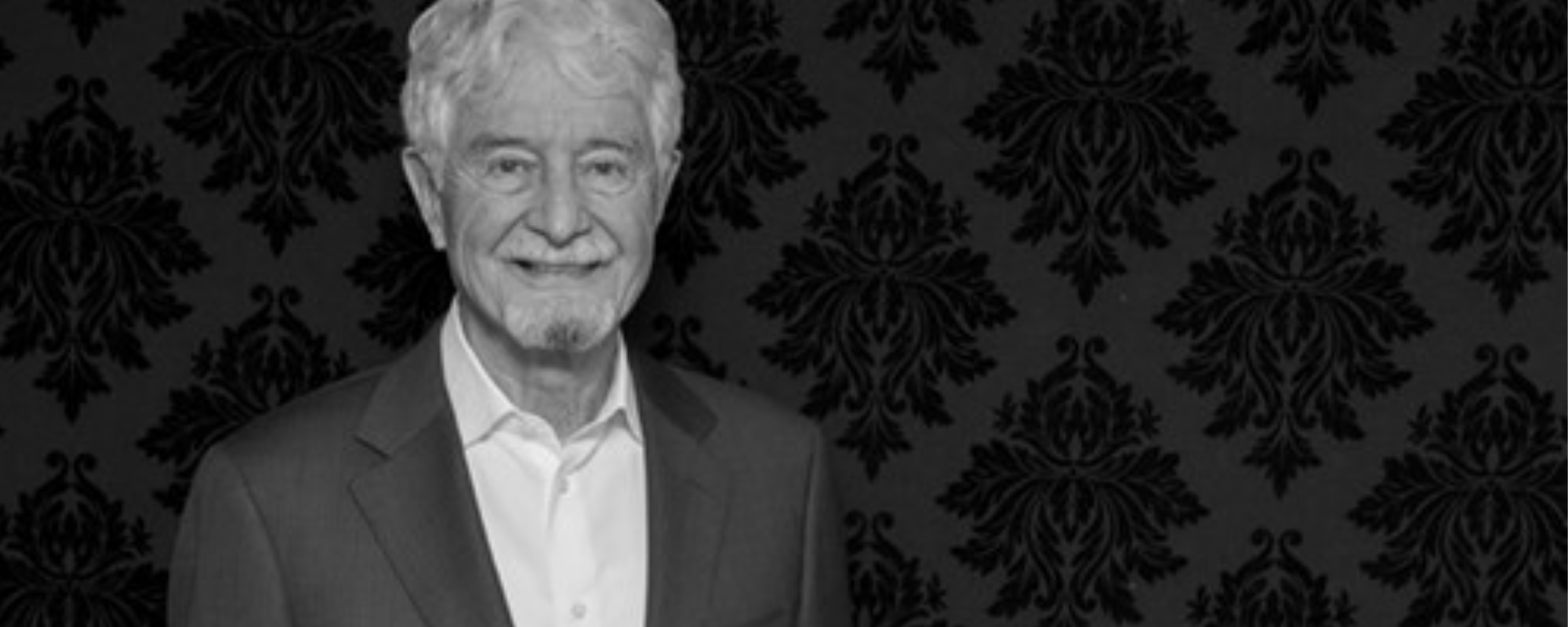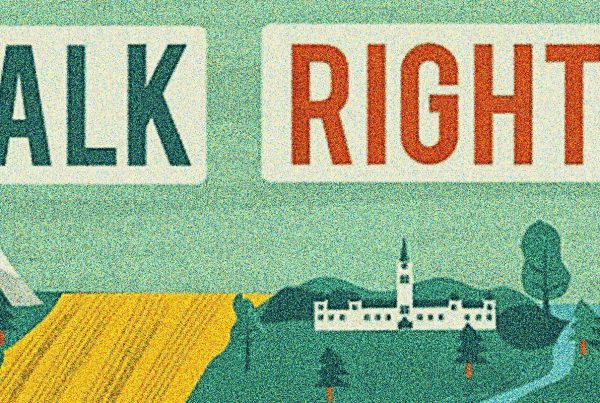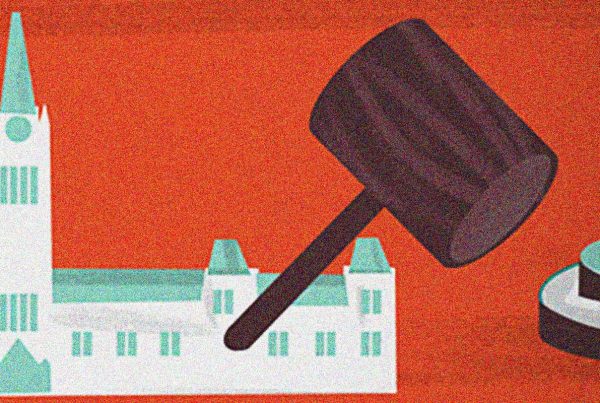TalkRights features content produced by CCLA volunteers and interviews with experts in their own words. Opinions expressed here do not necessarily represent the CCLA’s own policies or positions. For official publications, key reports, position papers, legal documentation, and up-to-date news about the CCLA’s work check out “THE LATEST” section of our website.
Since the late 1960s, Leo McGrady has published the Guide to the Law of Protest and travelled around the country conducting workshops for individuals and organizations about civil disobedience.
As part of the Talk Rights Project, the CCLA spoke with him about how the guide has evolved over the years, how protestors use innovation and creativity to fight antipathy, and why some people call the current moment “an age of protest.”
CCLA: You open your Guide to the Law of Protest with a quote from Nathalie Des Rosiers, a former general counsel for the Canadian Civil Liberties Association: “The rich people have their lobbyists and the poor people have their feet.” For you, what is the significance of these words?
Leo McGrady: Those words address the ever-increasing gulf between rich and poor in their ability to influence political decisions in our country. We don’t have a clear sense of how much money is being spent in Canada at the different political levels on lobbying, but we do know from the 2020-2021 Report of the Commissioner of Lobbying that there are about 10,000 registered lobbyists — individuals and organisations — in this country. That seems astonishing in a country with a population of only 38 million individuals.
How does the average person in either country counter their influence? That’s why I found Nathalie’s comments so valuable. They get to the heart of that inequity.
If I may, I should also point out that I’ve added another quote (to the guide) from a person I also admire. This one is from Delores Huerta, a co-founder with Cesar Chavez, of the United Farm Workers in the U.S., and mother of 11 children: “Every moment is an organizing opportunity, every person a potential activist, every minute a chance to change the world.”
This is a heroic 91-year-old woman who continues to be an active protest organizer. Her last jail sentence for civil disobedience was just a few years ago — 2019.
CCLA: Why is it so important for you, as a lawyer, to help educate individuals and organizations on the law of protest?
Leo McGrady: We’re all taught in school and in society generally about how important it is to obey the law. Those are important values, but I think it’s also important to acknowledge that there are occasions when the law is wrong. It’s bad law or the law is inadequate, and those deficiencies must be brought to the attention of the public as a whole, and the legislators and politicians so the law can be changed. Sometimes there’s simply no way of doing that except by breaking the law. That’s why it’s important to do our best to educate individuals and organizations about the law of protest.
CCLA: The Guide to the Law of Protest is an excellent and in-depth resource. I know you can’t summarize the whole resource at once, but what is one key takeaway you would hope somebody walks away with after reading the guide?
Leo McGrady: If I could talk about a couple of key takeaways – the first one and the most important one would be a comment by the then-Chief Justice of the Manitoba Court of Appeal, Samuel Freedman.
The last person one would ever expect to hear talk about the value of civil disobedience would be a Chief Justice – and one of the most admired and respected Chief Justices! But he did. He said, “There have been instances in human history in which disobedience to law has proved a benefit to law and to society.”
He went on, though, to say that there are three qualities to civil disobedience. First, it’s always peaceful. Secondly, those who engage in civil disobedience must be prepared to accept the penalty arising from the breach of the law. And thirdly, their purpose must be to expose the law breached to be immoral or unconstitutional, in the hope that it will be repealed or changed.
The second takeaway is a study by Harvard Professor Erica Chenoweth. Her work focuses on civil resistance and regime changes, but many of her recommendations have proved invaluable over the years for providing guidelines for what civil disobedience should look like to be effective.
She’s come up with four points: The first thing to do is to have a carefully worked-out, long term, imaginative strategy. Her second point is to engage in a variety or a range of tactics. Thirdly, the tactics are to be carefully sequenced out over a period of time. And fourthly, an ever-expanding, broad-based, diverse group of participant-supporters is essential. Not surprisingly, her study demonstrated that this was the most important factor.
CCLA: Some of the most controversial forms of protest we’ve seen in the last couple of years are in response to COVID-19 measures. Do you have any thoughts on balancing legitimate public health concerns with the important rights associated with protesting?
Leo McGrady: With the traditional forms of protest and civil disobedience, there should be no conflict between public health concerns and protest rights, provided the protests are carried out following the basic principles that have been with us for many generations, popularized by Gandhi, Martin Luther King Jr., and then referred to by the Chief Justice Freedman.
In most cases, there has been no conflict between those values. The protests have not focused on health care providers, nor on hospitals, nor on clinics, nor medical personnel. It’s when they do focus on those physical sites and on those individuals that the protests get out of hand and become unwieldy and, in my view, become unsupportable.
CCLA: In the guide, you say that some people describe the current moment as an “age of protest,” – what is it about this moment in history that is causing people to turn to civil disobedience?
Leo McGrady: For many decades there have been dramatic examples of civil disobedience. But it does seem fair to describe the current era as an “age of protest,” and I think there are a number of reasons for that.
The first is the continuing and increasingly rapid degradation of our environment – for example the horrible fires that we’ve seen recently here in British Columbia and elsewhere, as well as floods and other environmental disasters. These events have brought home the urgency of the problems and highlighted the relative inactivity on the part of our politicians.
Next, I would say the growing income inequality between Canada’s top earners and everyone else. It’s become even more exaggerated during the pandemic.
And then the third factor that’s led to this “age of protest” is the ongoing abuse and neglect of members of the Indigenous community, illustrated by the number of missing and murdered Indigenous women, and the discoveries of bodies on former residential school properties, all in the context of denial of land claims and fishing claims.
CCLA: Do you think there is any risk that the more ubiquitous civil disobedience becomes, the easier it is to ignore or co-opt? How have you seen movements innovate to overcome antipathy?
Leo McGrady: I don’t see any evidence that there has been any sign of antipathy. On the contrary, I think there’s signs of constant innovation and the use of imaginative tactics.
For example, look at the photos on page 4 of the October 2021 guide The protestors are wearing gasmasks, wearing kilts, and playing the bagpipes at the Free Trade of the Americas protest in Quebec City . In addition, they built this wonderful wooden medieval catapult and brought it and boxes of teddy bears with them to the protest. They catapulted the teddy bears over the barricade, behind which these militarized and heavily armed police stood. This drew international attention. The protest and the publicity it attracted was successful, and the use of these innovative and creative tactics contributed to that.
Another example, on page 17, comes from a Greenpeace protest. A Shell Oil ice-breaker, MSV Fennica, was planning to leave Portland Oregon for the Arctic on an oil exploration trip. The ship was to sail under the St John’s Bridge on the Williamette River to leave Portland. 13 Greenpeace protesters rappelled down from the bridge, effectively blocking the passage of the ship They were joined by a group of ‘kayaktivists’ from the Portland Climate Action Coalition. and the Center for Sustainable Economy in Port Townsend, Washington, who were blocking the river. This is another example of innovative protests being successful – not alone, as there was a huge amount of publicity and public debate – but Shell eventually decided to pull out of the Arctic. Those protests helped galvanize public opposition.
The final example, on page 5, from Montreal, is a protest against the gutting of Quebec provincial public sector pensions. The protestors turned out in great numbers, some of them of them dressing as key Quebec politicians and as larger-than-life puppets, with huge papier-mâché heads. Again it was a very effective demonstration using innovative, humorous techniques.
CCLA: The first copy of the guide dates back to the late 1960s, and it has been through 17 iterations since then. Can you speak to how the law of protest has changed in that time and, in particular, why it was important to you to create Cedar as Sister: Indigenous Law and the Common Law of Protests – A Guide to the Law of Protests?
Leo McGrady: One of the most significant changes is that we’re seeing people out on the streets protesting who, twenty years ago, we would never have been there.
We’re seeing prominent academics engaging in protests, for example. Professor Rita Wong from Emily Carr University was recently sentenced to 30 days in jail for her protest at the Trans Mountain Pipeline site in Burnaby BC . We’re also seeing doctors and lawyers protesting and sentenced to jail.
As to why it was important to create a First Nations version of the guide, that was initially at the request of then-in-house counsel for the B.C. Civil Liberties Association, David Eby. He asked if I would be interested in writing a specific First Nations version of the guide, and I of course agreed to do so.
I made many changes to the guide for the First Nations edition. For example, I included a section on protests on water for fishing protests that were being planned for the mid-coast by a First Nations community – the Kitasoo/Xai’xais. I travelled to Klemtu and to different parts of the province to deliver workshops. I delivered one workshop in the extraordinary Wapp Gaits’ap long house in Terrace. It was scheduled for a two-hour session starting at 6:00 PM, and we ended up going until 11:00 PM. It was inspiring. I think I learned more in those hours than in any other four or five workshops combined.
CCLA: Is there anything else you’d like to add?
Leo McGrady: One last comment is to speak about the Emergencies Act, which was just implemented yesterday [February 14, 2022]. In my view, the implementation of that legislation raises serious concerns about the federal government’s overreaction.
We’ve seen existing police resources and existing legislation work effectively to resolve problems raised by the blockade at the Ambassador Bridge. That same route is now open. The same tools were used to bring about the clearing of the Coutts border crossing in Alberta. Thirteen arrests were made and firearms seized, again using traditional police methods and traditional police forces. The difficulty with Ottawa is that they maintain they lack the resources to solve the problem, but that’s simply not so, as we’ve seen at other sites across the country.
In sum, I think implementing the Emergencies Act is an overreaction. It does set a very dangerous precedent, and it raises serious concerns about our civil liberties.
Guest Author Emily Chan with Leo McGrady, Q.C.
About the Canadian Civil Liberties Association
The CCLA is an independent, non-profit organization with supporters from across the country. Founded in 1964, the CCLA is a national human rights organization committed to defending the rights, dignity, safety, and freedoms of all people in Canada.
For the Media
For further comments, please contact us at media@ccla.org.




